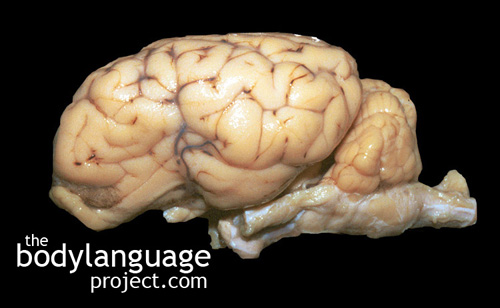
The “offerer” in the rogatory posture wants to give you his thoughts and just doesn’t understand your point of view.
The human brain has been shown to place a disproportionate amount of attention on the wrists, palms, fingers and hands compared to the rest of the body. Throughout evolution as we developed the ability to walk upright, our brains became fixated on what our hands were doing because they became more expressive in language through gesticulation, became more skilled such as creating fires, catching prey, collecting berries and building structures and tools to do so. However, our where our hands differ significantly from our feet is their ability to become extremely dangerous. Hands coupled with weapons can inflict deadly blows.
Being open means being honest and not hiding anything. In evolutionary terms, the palm display is an important gesture signifying honesty because it is a way to make evident to others that no threat or weapon is present. Palm and wrist displays have even been noted to be sexual in nature and more frequently flashed by women during courtship likely because it is such a vulnerable part of the body. The wave, as a long distance greeting, probably has roots in showing that we aren’t carrying a spear, sword, or bow and arrow. Having the hands deep in a pocket or behind the back can be a sign of aggression or passive threat, and our evolutionary history tells us that someone who is hiding something is probably not hiding a bouquet of flowers. But if they are, why take the risk! Showing open palms, facing up, or the “palm flash” is essentially what would have happened thousands of years ago when two foreign tribes met. Even today we might guess that a stranger approaching us on the street was up to no good if they hid their hands at their backs or tucked inside a jacket. We’d think they were harboring a gun and planned to rob us.
Having the arms out and extended, palms up, or vertical shows that we are safe and therein lies our most popular greeting, the handshake. The degree to which this openness occurs represents the degree of openness. Having the arms completely to the side or up and open with fingers apart is as open as one can get and it signal as much. We rarely see this form of openness, rather, openness is of degree, so we therefore must look for more subtle and acceptable cues.
Open gestures are accompanied by phrases such as “Trust me.”, “I wouldn’t lie to you.” and “What, you don’t believe me?” We also gesture with palms facing upward when we are offering something. However, the offering, in this context, isn’t a tangible item, rather, it’s an idea. It could be a cell phone plan coming from a salesman in the mall, or a reorganizing of the company, a downsizing, or new way to deal with customers or any number of things requiring deal making or selling.
When the arms are completely outstretched with palms up we call it the “rogatory” posture, or prayer-like. It is as if we are offering dialogue to another and sincerely want to be believed, trusted and accepted. This posture is not dominant or even confident however, because it lacks conviction. So while palm flashes show honesty and trustworthiness because they show no threat, they lack sustenance and power in terms of conviction. Palm down displays though, by placing hands face down on a table or standing head on and leaning with the fingertips spread to anchor the body shows emphatically that a position is held confidently. While conversing on a topic, we should therefore expect both palms up and palms down as opinions are either offered with reservation or presented with conviction. Depending on your position on the matter you may wish to employ either submission or dominance to your advantage. For example, on issues you wish to concede or are unsure of, of which making the other party aware of this fact is acceptable, use palm up, but when you wish not to concede or wish not to be uncovered as unsure, keep palms face down. The rule of thumb is that palms down “tell”, while palms up, “offer.” When someone wishes to display honesty, such as declaring “You have to believe me, I didn’t do it” they should use palm down displays otherwise they may not be telling the truth and expect not to be believed.
So why do we find it comfortable to put our hands in our pockets? Our clothing, especially that of men’s, is specifically designed with this in mind. The fashion of women rarely permits the luxury of the same deep pockets, but this isn’t to say they wouldn’t take advantage of them if they could. Curiousity says that we must reason why this is so. What is it about this hand placement that makes us more at ease? Are men more reserved to the point of requiring their garments to accommodate their needs or is it just superfluous? There’s no doubt that form meets function in this case, and putting our hands in our pockets makes us feel more comfortable and gives us a way to occupy our hands, but what does the body language convey to others?
When children lie they can be found to place their hands behind their back concealing them. This is a dishonest gesture. As we grow into adulthood, this gesture becomes more condensed and our hands find a new place in pockets. Seeming outright dishonest for having your hands buried in pockets is a bit extreme, but context specific could be a ‘tell.’ Regardless though, hidden hands convey a lack of confidence especially when the hands would be best served to gesture appropriately in conversation. The hands are a very effective way to colour our dialogue and make us appear more honest and intelligent. When delivering important information showing the flesh of the palms, the “palm flash” can be critical to portray honesty. At a subconscious level, as the palms are made more visible, the more honest others will find the speaker. Give it a try!





